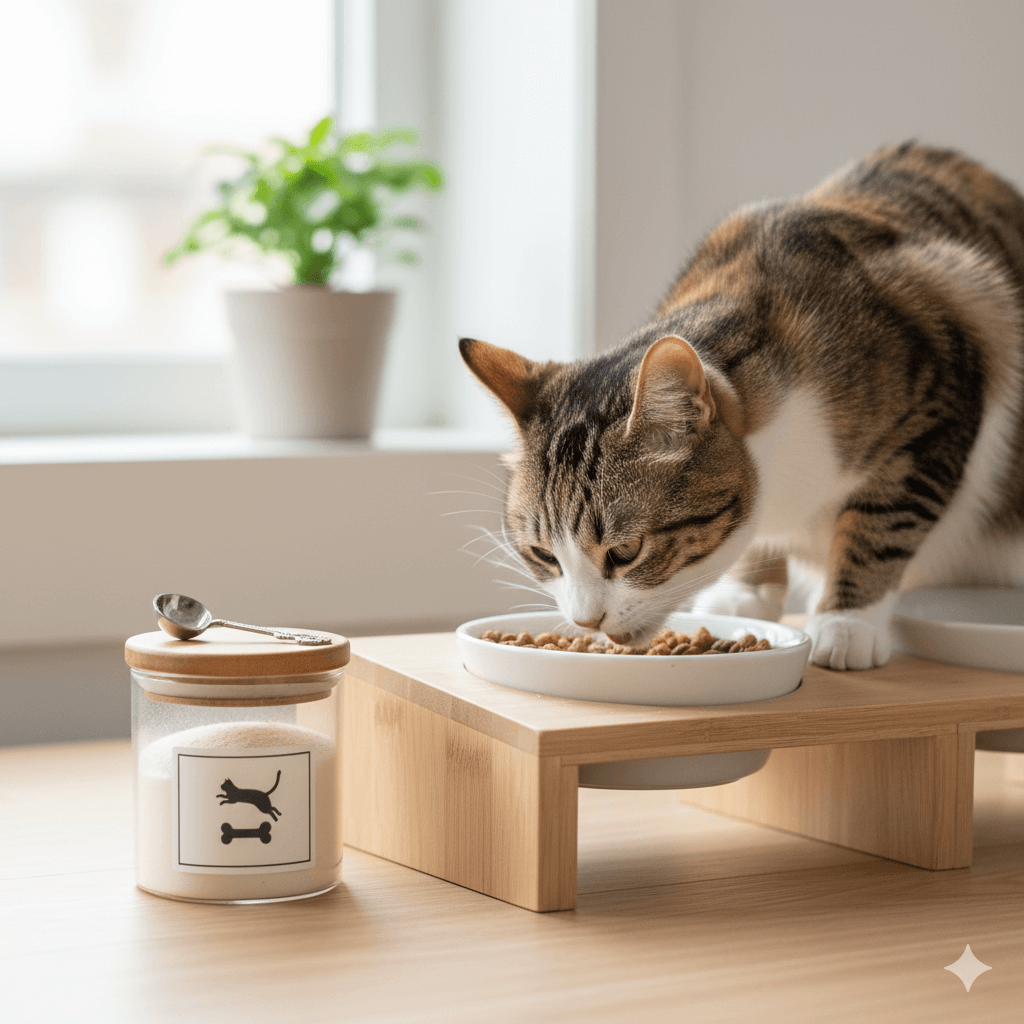Can Cats Eat Scallops?
When it comes to treating our feline friends, many cat owners wonder if human foods like scallops are safe for their pets. Scallops, known for their delicate flavor and nutritional value, might seem like a tempting treat to share with your cat. However, before offering this seafood delicacy, it’s important to understand whether scallops are truly safe and beneficial for cats—or if they pose potential risks. In this blog post, we’ll explore everything you need to know about feeding scallops to your cat, including preparation tips, health benefits, and precautions to keep in mind. By the end, you’ll have a clear understanding of whether scallops can be a healthy addition to your cat’s diet.
Potential Benefits of Feeding Scallops to Cats
Scallops can offer some nutritional advantages for cats when served in moderation and prepared correctly. Here are some reasons why scallops might make a good occasional treat for your feline friend.
High-Quality Protein:
Scallops are rich in lean protein, which is essential for maintaining muscle mass and supporting overall health in cats.Low in Fat:
Unlike fattier meats, scallops contain minimal fat, making them a lighter option for cats prone to weight gain.Rich in Vitamins and Minerals:
Scallops provide nutrients like vitamin B12, magnesium, and phosphorus, which contribute to energy production and bone health.Hydration Support:
Scallops have a high water content, which can help keep your cat hydrated, especially if they don’t drink enough water.Variety in Diet:
Offering small amounts of scallops occasionally can add variety to your cat’s meals, preventing boredom with their usual food.
While these benefits make scallops an appealing choice, it’s crucial to serve them in moderation and ensure they’re prepared safely.
Risks of Feeding Scallops to Cats
Despite their nutritional value, scallops come with certain risks that every cat owner should consider before sharing them with their pet.
Allergic Reactions:
Some cats may be allergic to seafood, leading to symptoms like itching, vomiting, or diarrhea after consuming scallops.Choking Hazards:
Large pieces of scallop can pose a choking risk, especially for smaller cats or those who gulp their food quickly.Salt and Seasoning Concerns:
Many prepared scallops contain added salt, spices, or sauces, which can upset your cat’s stomach or harm their kidneys.Parasites and Contaminants:
Raw or improperly cooked scallops may carry parasites, bacteria, or toxins that could make your cat sick.Digestive Upset:
Introducing new foods like scallops too quickly can cause gastrointestinal issues such as vomiting or diarrhea.
Understanding these risks ensures you approach feeding scallops to your cat with caution and care.
Check this guide 👉Can Cats Eat Ladybugs? Best 7 Expert Tips!
Check this guide 👉Can Cats Eat Jalapeños? Best 7 Expert Tips!
Check this guide 👉Can Cats Eat Nectarines? Best 7 Expert Tips!

Safe Ways to Serve Scallops to Cats | Foods to Avoid Giving Your Cat |
|---|---|
Plain, cooked scallops (no seasoning) | Raw or undercooked scallops |
Small, bite-sized pieces | Scallops with added salt or butter |
Steamed or boiled preparation | Fried or breaded scallops |
Occasionally as a treat | Scallops mixed with onions or garlic |
Fully cooled before serving | Leftovers with heavy sauces |
How to Safely Prepare Scallops for Your Cat
If you decide to feed your cat scallops, proper preparation is key to ensuring their safety and enjoyment. Follow these guidelines to minimize risks and maximize benefits.
Choose Fresh, High-Quality Scallops:
Opt for fresh or frozen scallops from reputable sources to reduce the risk of contaminants.Cook Thoroughly Without Seasoning:
Steam, boil, or bake the scallops without adding salt, spices, or oils to keep them safe and healthy.Cut Into Small Pieces:
Slice the scallops into bite-sized portions to prevent choking and make them easier to digest.Serve in Moderation:
Limit scallop treats to once or twice a week to avoid upsetting your cat’s balanced diet.Monitor for Reactions:
After feeding scallops, watch for any signs of allergies or digestive issues and consult your vet if needed.
By following these steps, you can safely introduce scallops as an occasional treat for your cat.
Signs Your Cat May Not Tolerate Scallops
Even with careful preparation, some cats may not tolerate scallops well. Recognizing these warning signs can help you address potential issues promptly.
Vomiting or Diarrhea:
These symptoms often indicate digestive upset caused by introducing a new food.Excessive Drooling:
Drooling can signal nausea or discomfort after eating scallops.Lethargy or Weakness:
A sudden lack of energy may suggest an adverse reaction or toxicity.Itching or Skin Irritation:
Allergic reactions to scallops can manifest as scratching, redness, or swelling.Loss of Appetite:
If your cat refuses to eat after trying scallops, it could mean they didn’t tolerate the food well.
If you notice any of these signs, stop feeding scallops immediately and consult your veterinarian for guidance.
Common Mistakes to Avoid When Feeding Scallops
Feeding scallops to your cat requires attention to detail to avoid mistakes that could harm their health. Here are some pitfalls to steer clear of.
Feeding Raw Scallops:
Raw seafood may contain harmful bacteria or parasites that can make your cat ill. Always cook scallops thoroughly.Adding Salt or Spices:
Cats are sensitive to sodium and spices, which can lead to dehydration or kidney issues over time.Overfeeding:
Giving too many scallops disrupts your cat’s balanced diet and can lead to nutritional deficiencies.Ignoring Allergies:
Failing to monitor for allergic reactions can result in severe discomfort or illness for your cat.Mixing with Harmful Ingredients:
Onions, garlic, or dairy-based sauces can be toxic or difficult for cats to digest.
Avoiding these mistakes ensures a safer and healthier experience for your cat.
Alternatives to Scallops for Your Cat
If scallops aren’t suitable for your cat, there are plenty of alternative treats that offer similar nutritional benefits.
Plain Cooked Chicken:
Lean, unseasoned chicken is a safe and protein-rich option most cats love.Boiled Fish (No Bones):
Salmon or tuna, cooked plainly, provides omega-3 fatty acids that support skin and coat health.Pumpkin Puree:
This fiber-rich food aids digestion and can help regulate bowel movements.Eggs (Cooked):
Scrambled or boiled eggs are packed with protein and vitamins, making them a great occasional treat.Freeze-Dried Meat Treats:
Commercially available freeze-dried treats mimic the texture and taste of raw meat without the risks.
These alternatives allow you to diversify your cat’s diet safely and nutritiously.
Understanding Your Cat’s Dietary Needs
Cats are obligate carnivores, meaning their bodies require specific nutrients found primarily in animal-based proteins. Understanding their dietary needs helps you make informed decisions about treats like scallops.
High Protein Requirement:
Cats need diets rich in animal protein to maintain muscle mass and support vital bodily functions.Limited Carbohydrate Tolerance:
Unlike humans, cats have difficulty digesting large amounts of carbohydrates, so grain-heavy treats should be avoided.Essential Nutrients:
Taurine, arachidonic acid, and vitamin A are critical nutrients that must come from their diet, as cats cannot produce them naturally.Hydration Importance:
Cats often don’t drink enough water, so moisture-rich foods like scallops or wet cat food can help keep them hydrated.Balanced Diet Priority:
Treats should never replace a complete and balanced commercial cat food designed to meet all their nutritional needs.
By keeping these factors in mind, you can ensure your cat stays healthy and happy while enjoying occasional treats like scallops.
Frequently Asked Questions About Cats and Scallops
Are scallops safe for cats to eat?
Yes, plain, cooked scallops are generally safe in moderation, but raw or seasoned scallops should be avoided.
How much scallop can I give my cat?
Stick to small portions—no more than a teaspoon or two—as an occasional treat rather than a regular meal.
Can kittens eat scallops?
Kittens have sensitive digestive systems, so it’s best to wait until they’re older before introducing scallops.
What should I do if my cat has an allergic reaction?
Contact your veterinarian immediately if you notice symptoms like vomiting, itching, or lethargy.
Can cats eat other types of seafood?
Certain seafood like salmon or shrimp can also be safe in moderation, provided they’re cooked plainly and served in small amounts.
Feeding Scallops to Your Cat: Proceed with Care
Scallops can be a nutritious and tasty treat for cats when prepared and served responsibly. While they offer several health benefits, it’s essential to weigh these against potential risks and ensure your cat tolerates them well. Always prioritize moderation, proper preparation, and close observation to safeguard your cat’s health. Remember, your feline friend relies on you to make the best dietary choices for them. With careful consideration, scallops can become a delightful addition to your cat’s menu without compromising their well-being.
Understanding Bone Supplement for Cats: Best 7 Expert Tips! – Safe, vet-approved guidance for strong feline bones & balanced nutrition.
Bone Supplement for Dogs: Best 7 Expert Tips! – Expert guide to calcium, collagen & bone health for every life stage.
Understanding Can Cats Get Sunburn: Best 7 Expert Tips! – Protect your feline from UV damage with vet-backed prevention strategies.
How to Train a Seizure Alert Dog: Best 7 Expert Tips! – Learn expert-backed steps to nurture natural instincts into reliable, life-saving seizure alerts.




